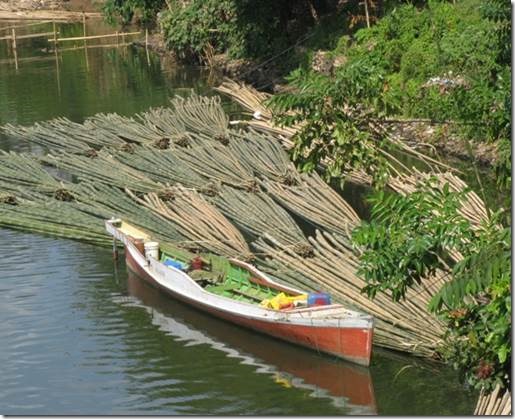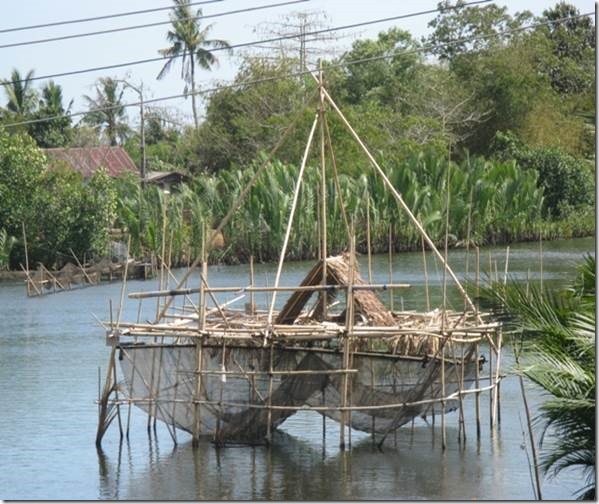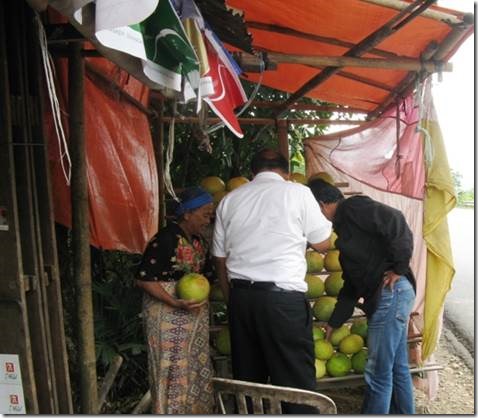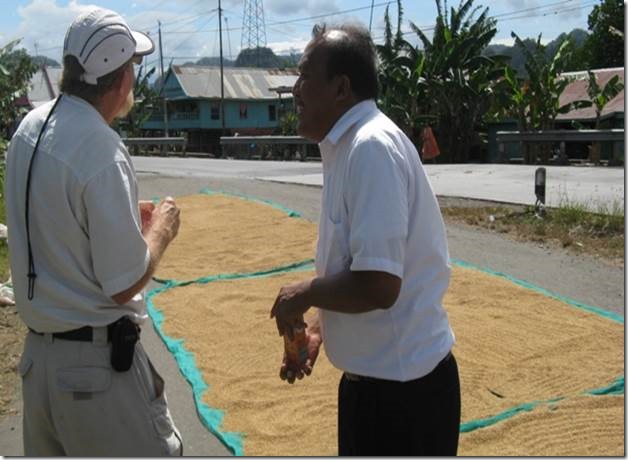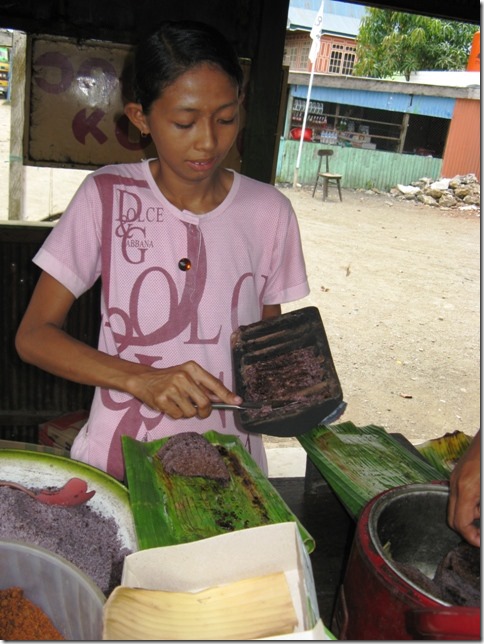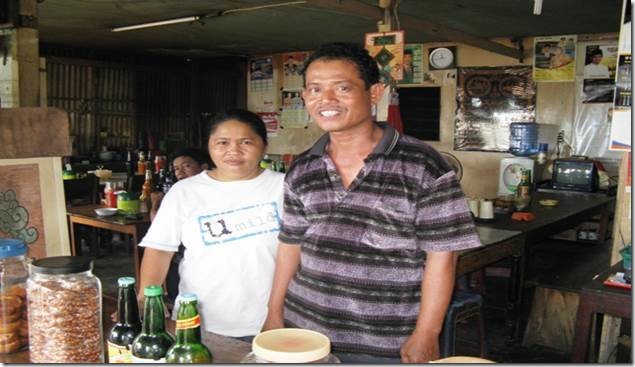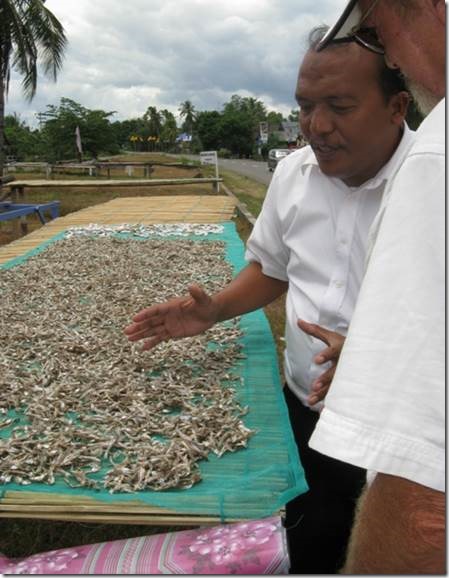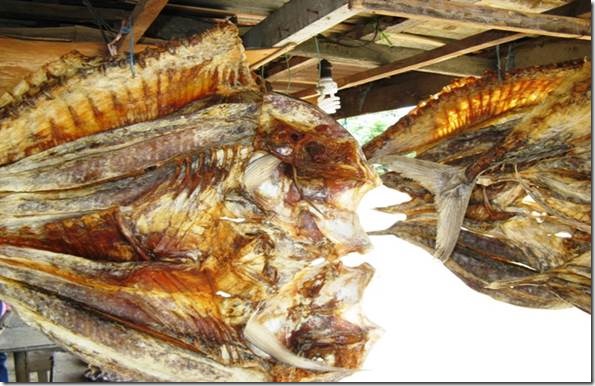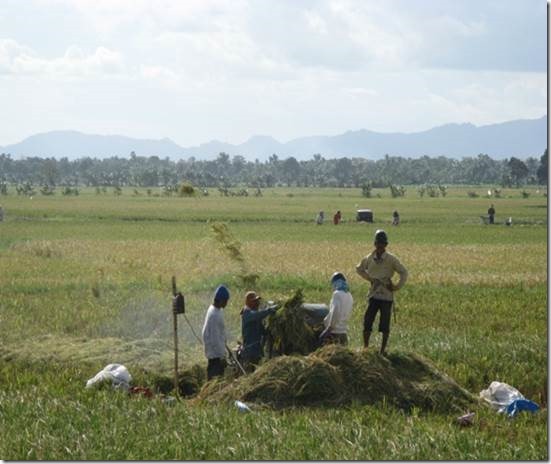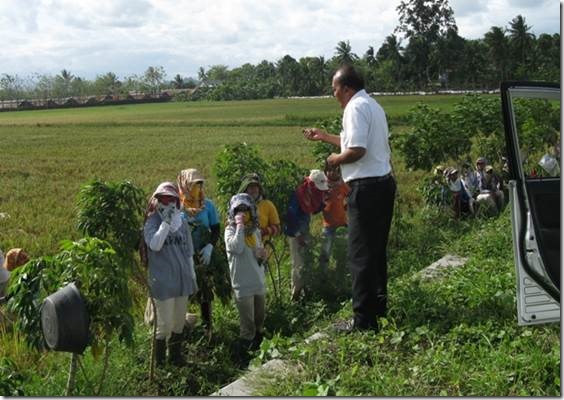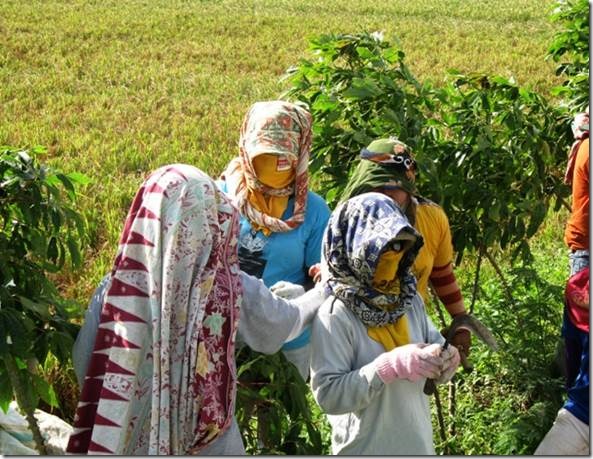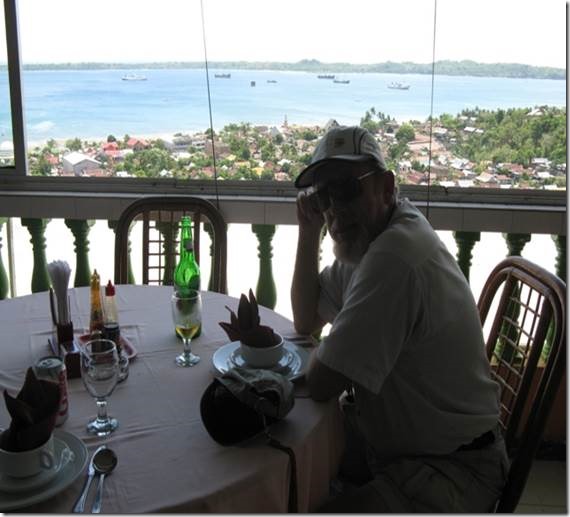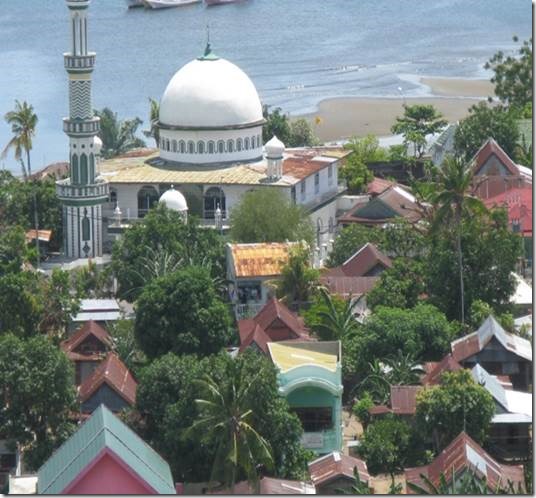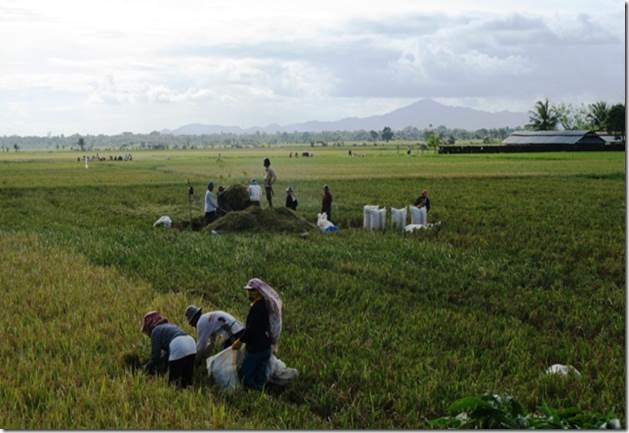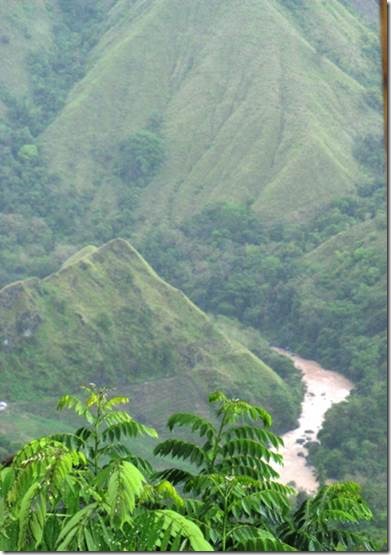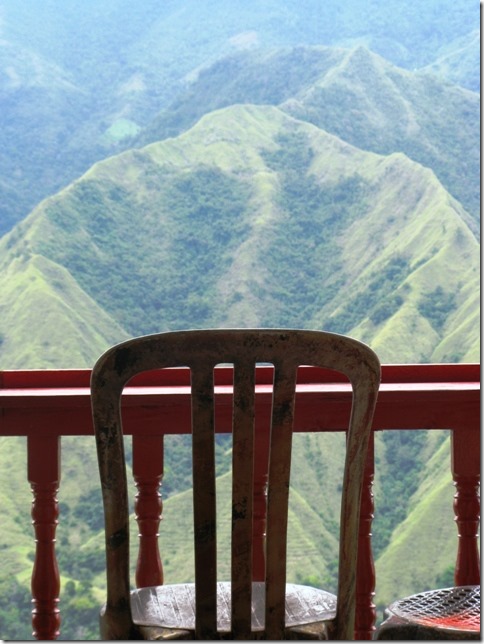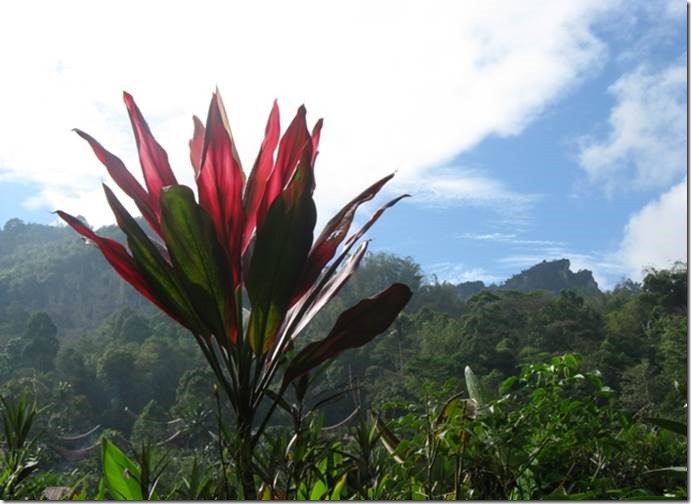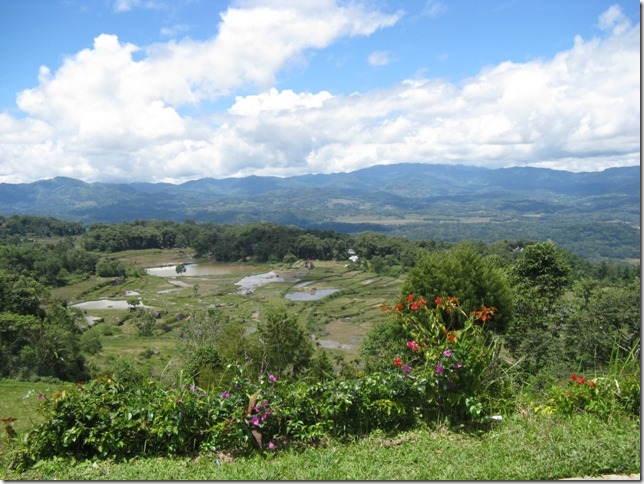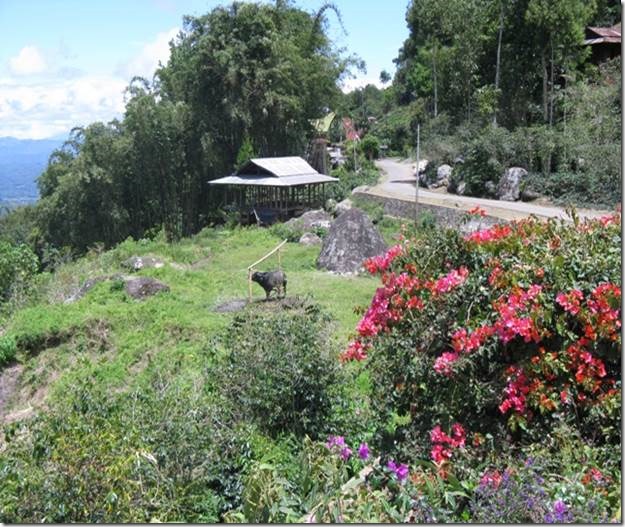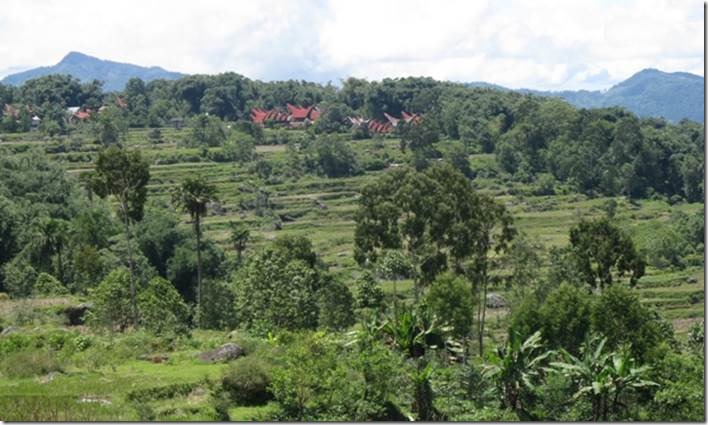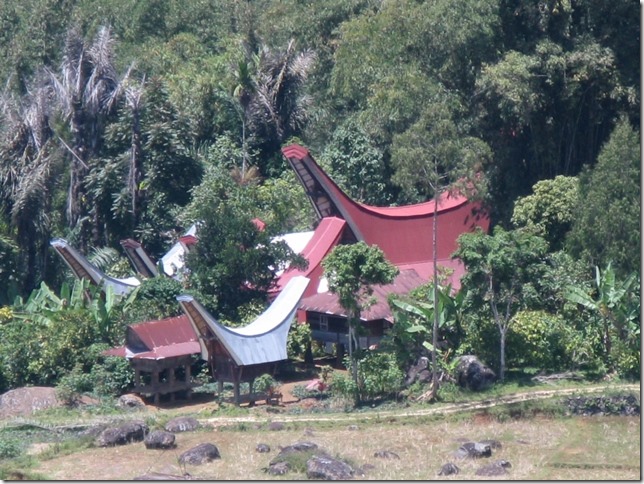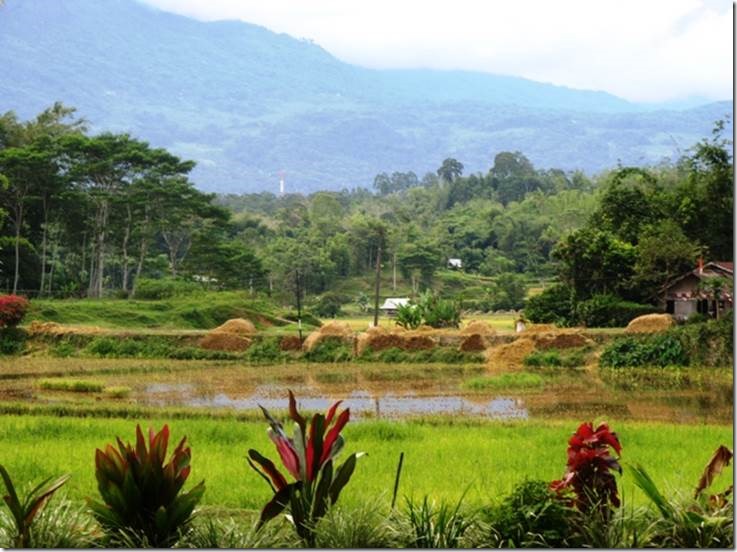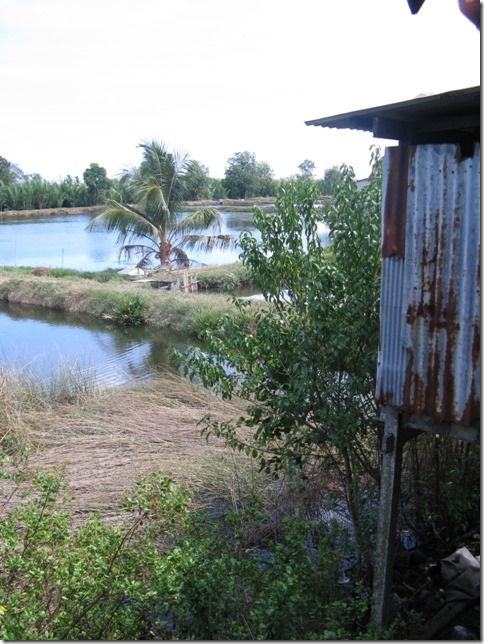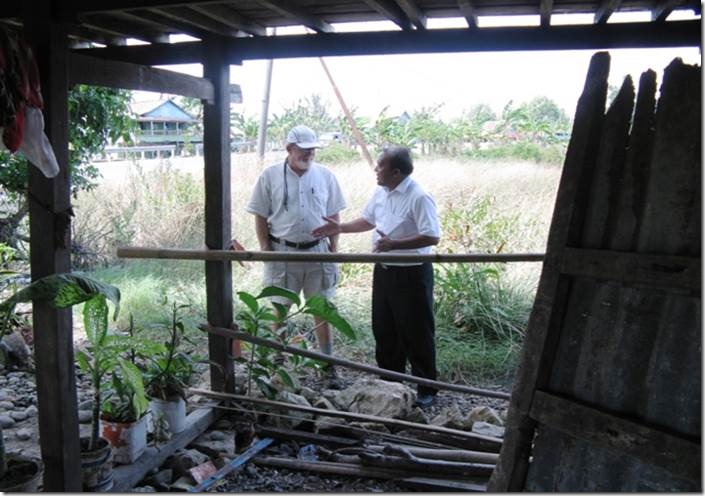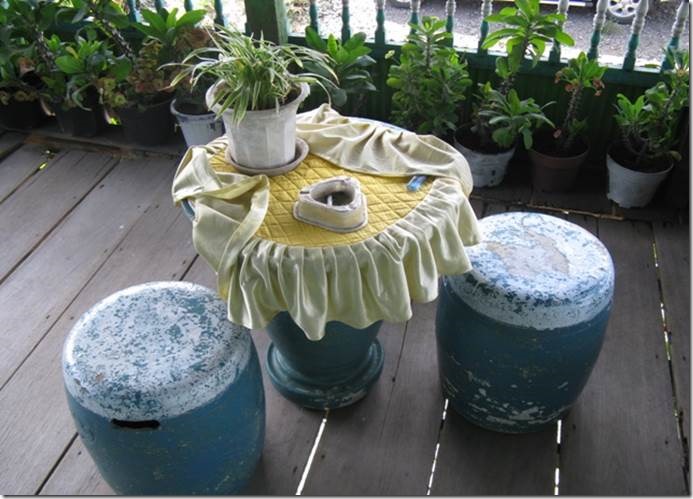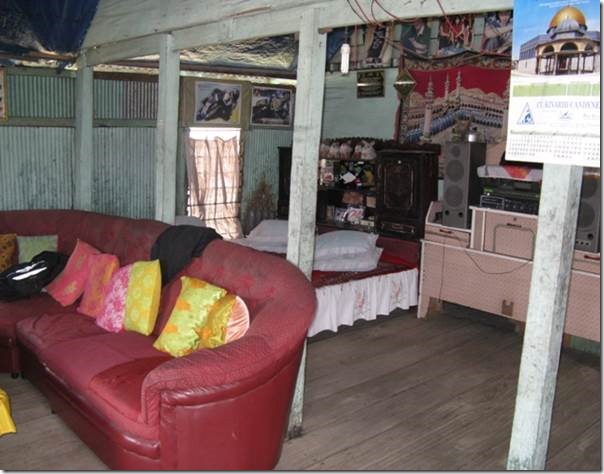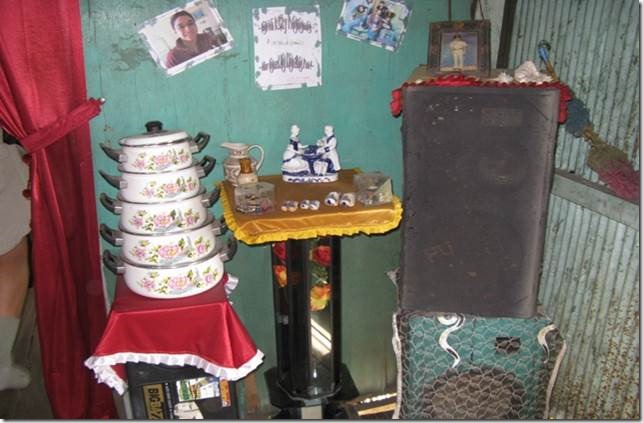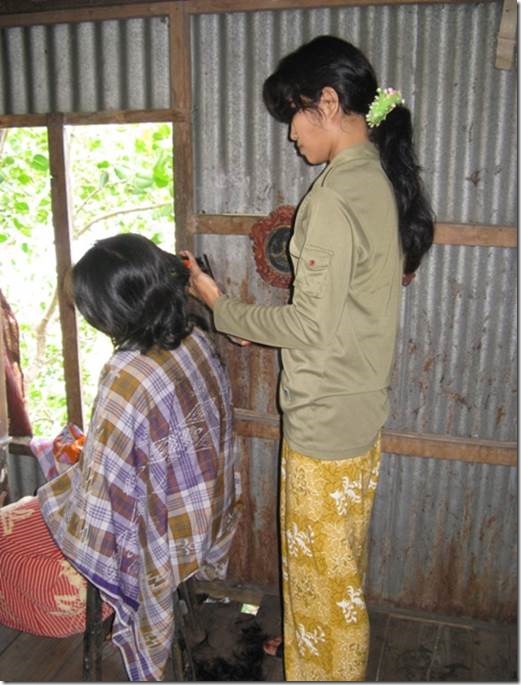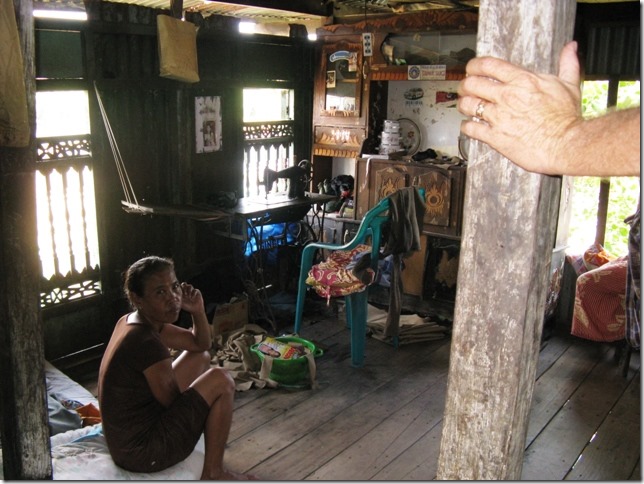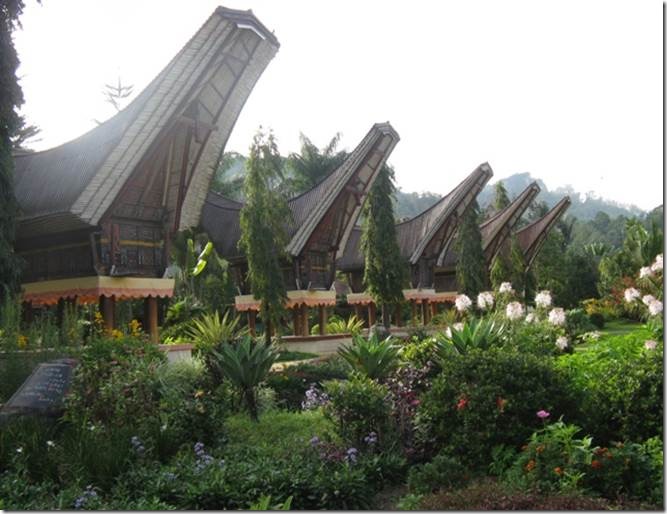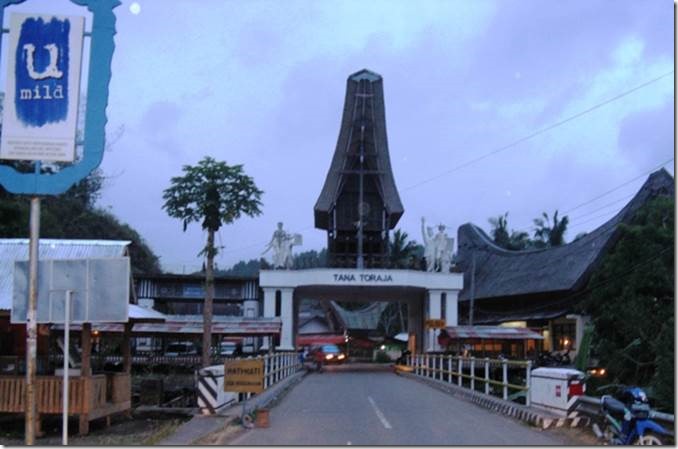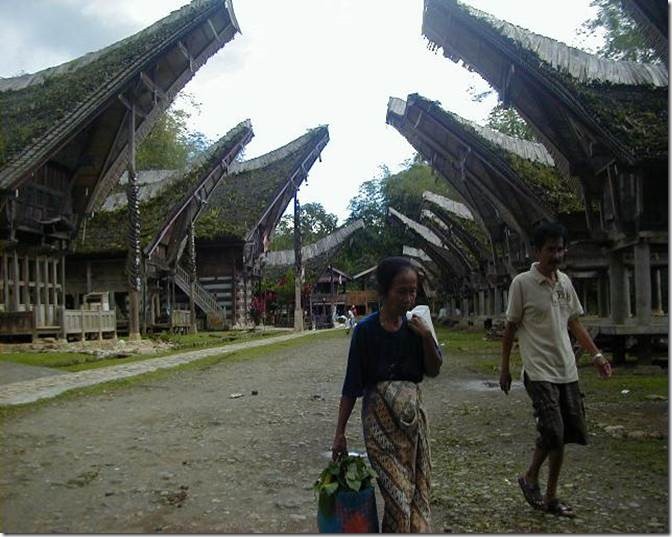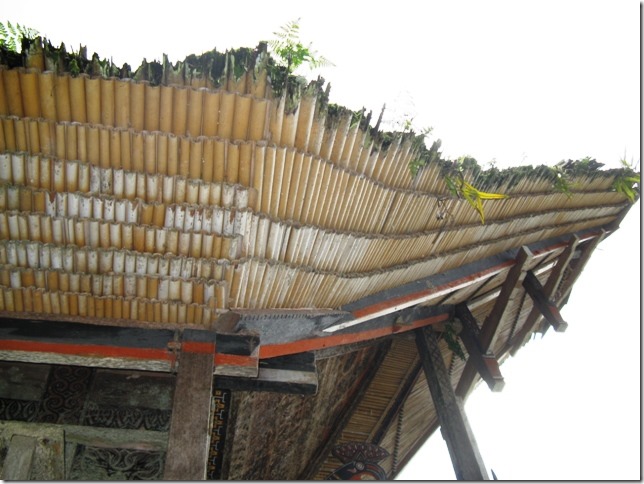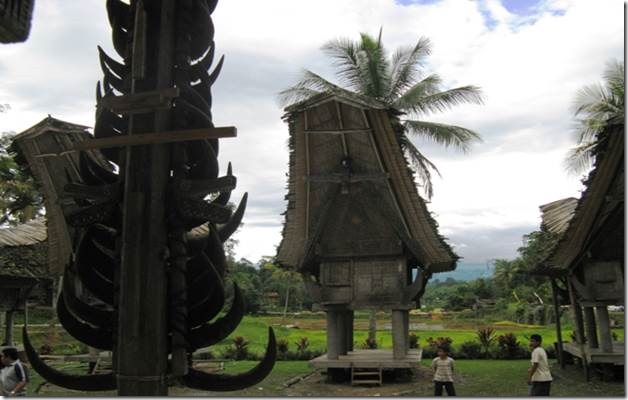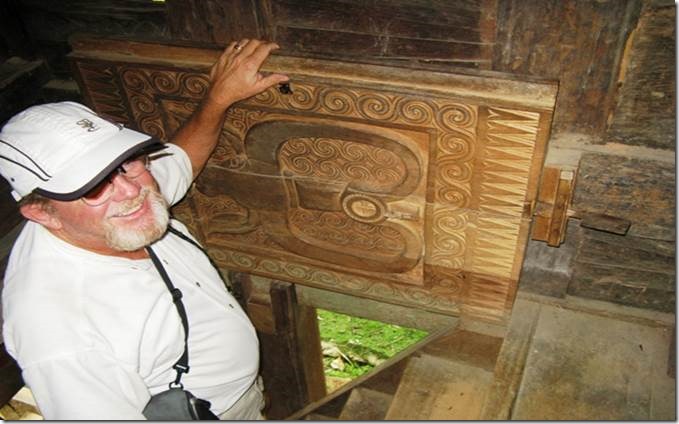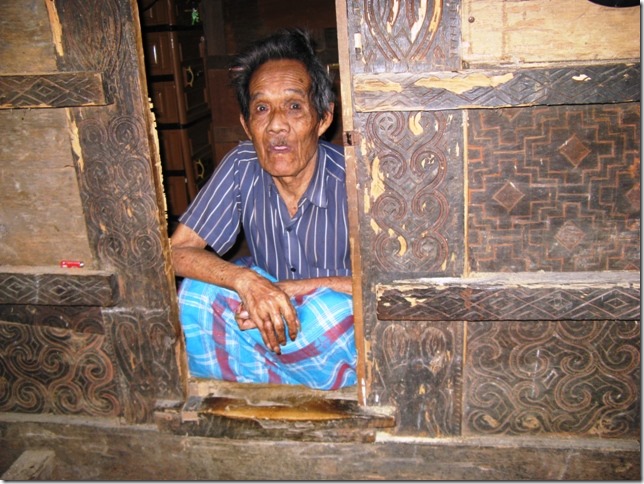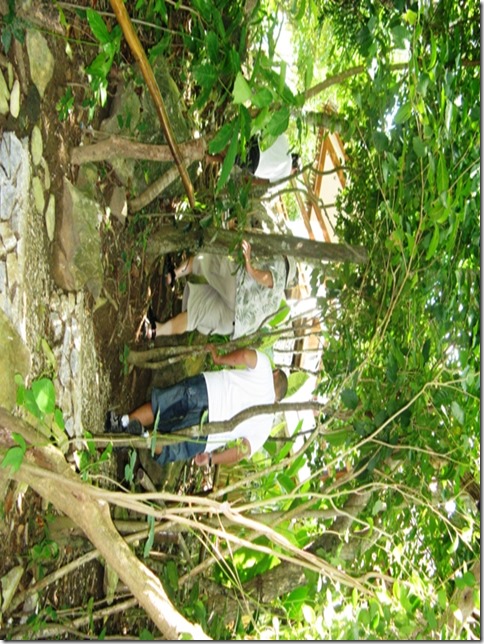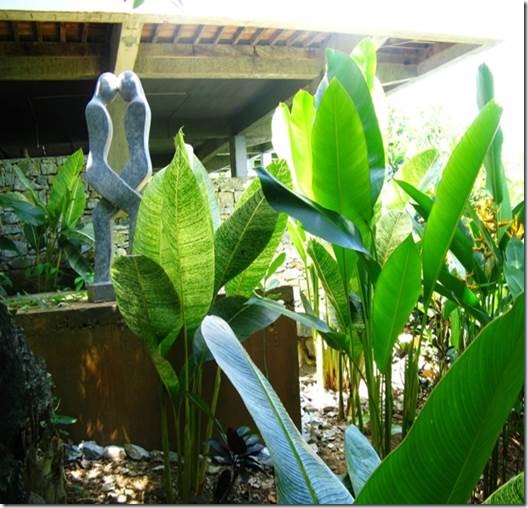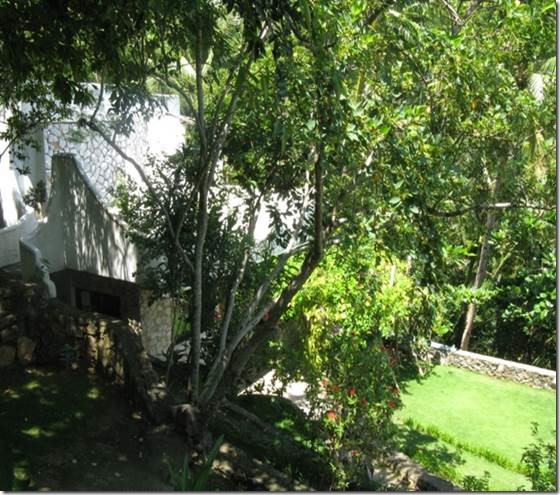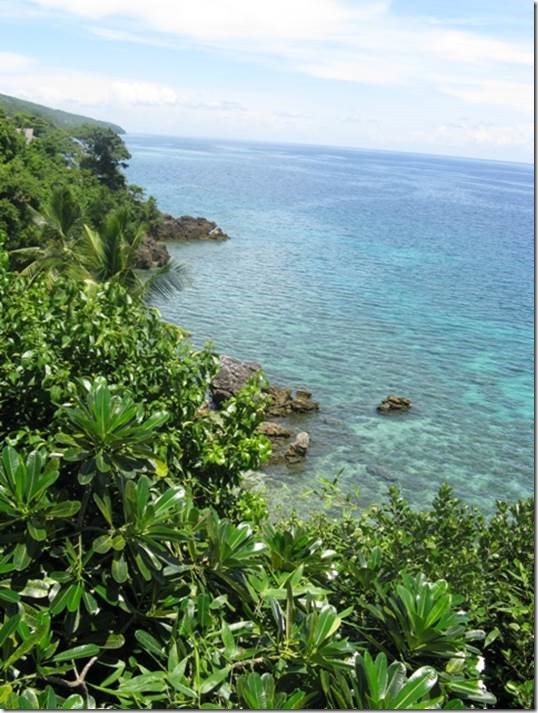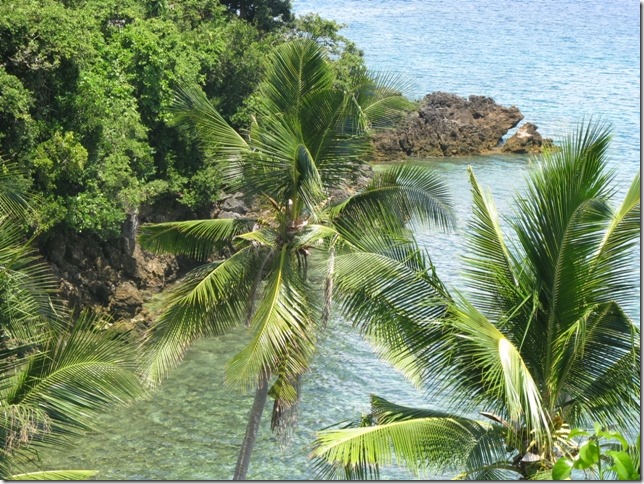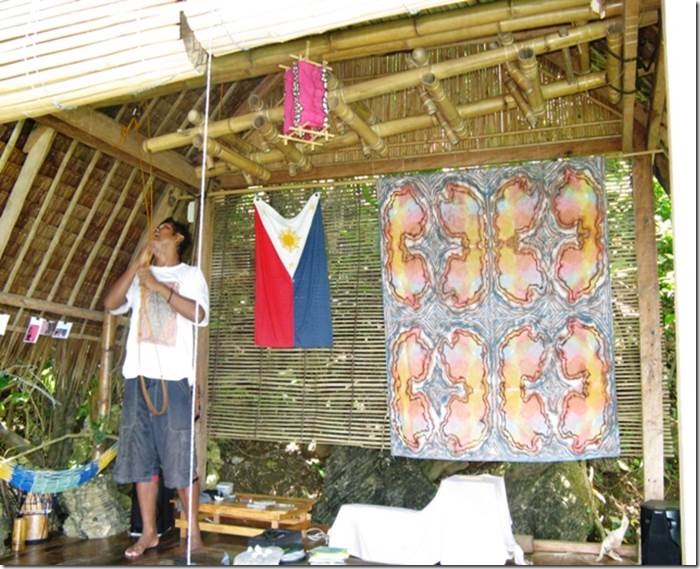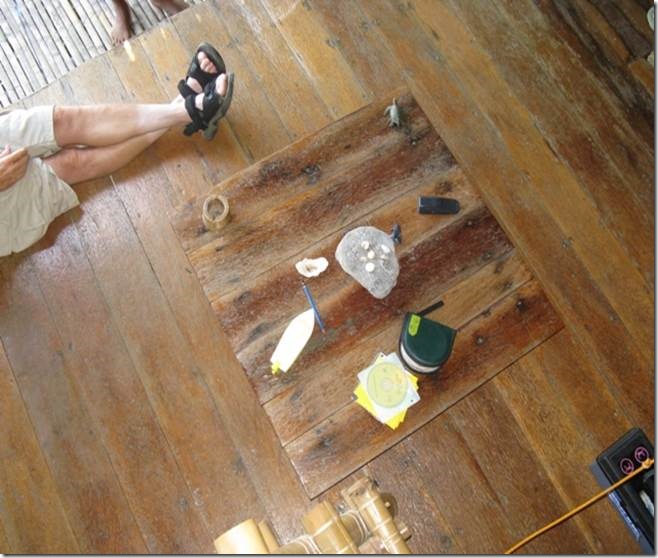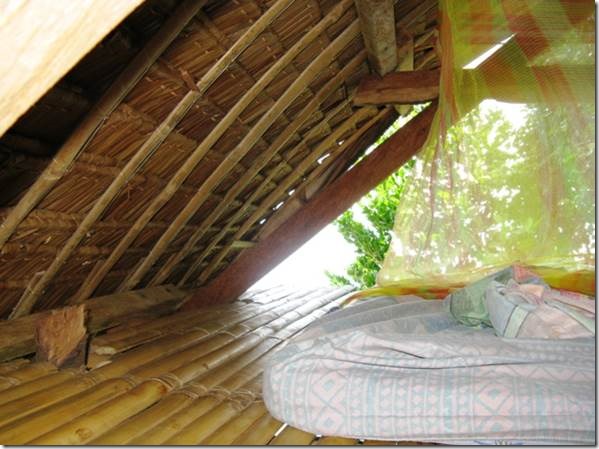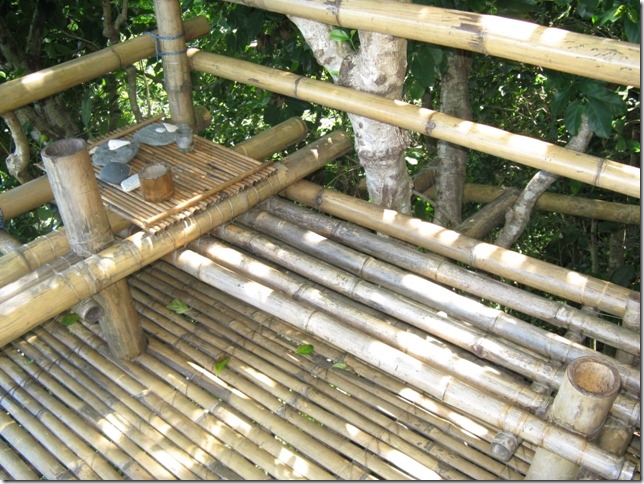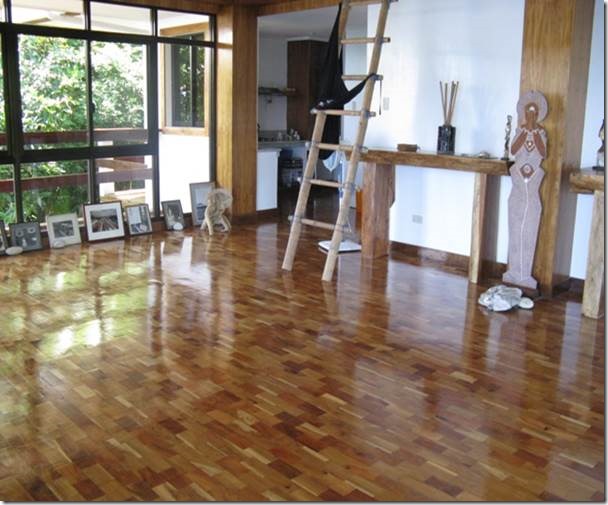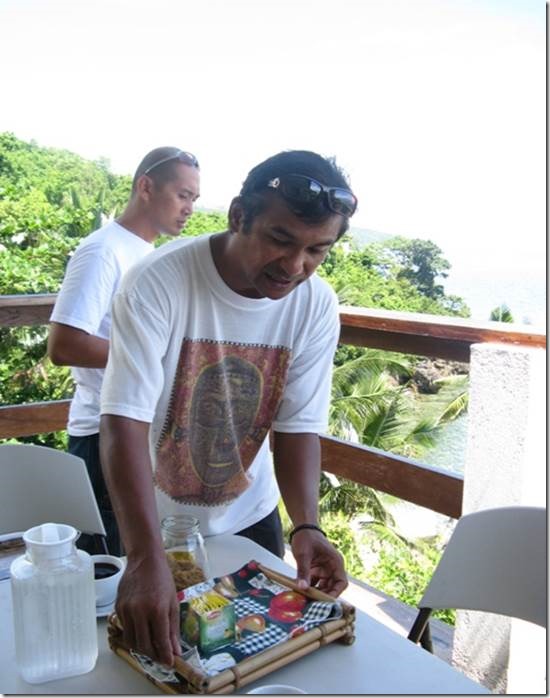Skulls, bones, house roofs shaped to look like ancient boats, livestock markets where wizened men with skinny legs covered by colorful sarong skirts and younger men in jeans bargained for dozens and dozens of pampered water buffalo and even more dozens of fat, squealing, sad, soon to be slaughtered pigs. Colors, noises, calls to prayer from the many mosques, scenery, food; your senses are overwhelmed taking it all in. And each has its own Indonesian, Makassan, Buginese or Tarajan word to describe it. Learn one phrase and forget one phrase…that’s how it went. But it was all very “biak!” which means good in at least on of those places.
It is 350 kilometers or about 210 miles from Makassar by the sea to Tana Toraja in the high mountains. The drive takes 8 hours but there are many stops along the way to see bamboo processing, a simple native home, local snack stops, to try sticky rice candy and not purchase dried fish preserved with formaline; lunch stops and scenic mountain view stops. All along the way, our extremely knowledgeable, warm, interested guide Rusli Amin taught us about the 3 distinct cultures of the area; Makassar, Parepare and Tana Toraja. I wish I could explain all that Rusli told us, but alas, it is a jumble in my head and will stay that way until I sort it out at a later date. But now I will be able to see what I read and that makes all the difference.
I took about 400 photos! I could have taken more and it would be an artist’s dream to have time for painting. But with just a day to go, one to stay, and one back we had to pick and choose. Randal and I are already daydreaming a month here during our next circumnavigation. It is a tourist destination but it hasn’t been Disneyfied yet. The people allow you to browse the small shops and bargain for that special one thing you just have to have. But no pressure, no begging. We stayed in a “resort hotel” with a 2 star room, a 4 star setting and depending on the meal, 2 to 5 star food! Combine all of that with cool, great sleeping weather and it is the perfect place to explore and just stay a while. I must admit I was starting to look for totem poles; you’ll see why. Randal and I give it 2 thumbs up!
The photos I am sending now are ones Randal too. He focused on the highlights of the area. I’ll start with those.
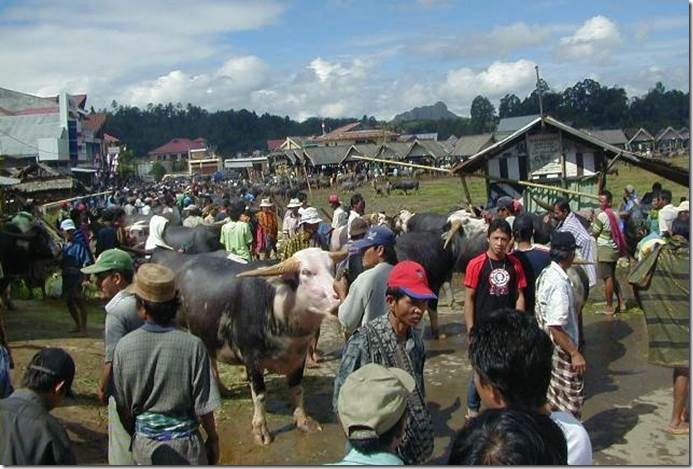 We were lucky enough to be in Rantepao for Pasa Bolu; market day. Each week men walk miles to town with their water buffalo. Pigs are trucked in too. Tana Toraja culture is based on the importance of the funeral ritual. Families save for years to buy water buffalo and pigs to slaughter for the funeral celebration. The more buffalo and pigs, the more honor to the dead person and his/her family. Until they die, water buffalo are treated as sacred animals and are pampered, fed, bathed. They are killed in the quickest and least painful way. Pigs are not so lucky and watching they caught, bound, tied to a carrier and hauled out for a funeral celebration, I found disturbing and sad. I know now where the phrases squealing like a stuck pig comes from. It is not my culture and I am not a vegetarian; but I felt sad watching the treatment of the pigs. If a water buffalo price is not met or one negotiated, the animal is led home for more pampering until the next market day.
We were lucky enough to be in Rantepao for Pasa Bolu; market day. Each week men walk miles to town with their water buffalo. Pigs are trucked in too. Tana Toraja culture is based on the importance of the funeral ritual. Families save for years to buy water buffalo and pigs to slaughter for the funeral celebration. The more buffalo and pigs, the more honor to the dead person and his/her family. Until they die, water buffalo are treated as sacred animals and are pampered, fed, bathed. They are killed in the quickest and least painful way. Pigs are not so lucky and watching they caught, bound, tied to a carrier and hauled out for a funeral celebration, I found disturbing and sad. I know now where the phrases squealing like a stuck pig comes from. It is not my culture and I am not a vegetarian; but I felt sad watching the treatment of the pigs. If a water buffalo price is not met or one negotiated, the animal is led home for more pampering until the next market day.
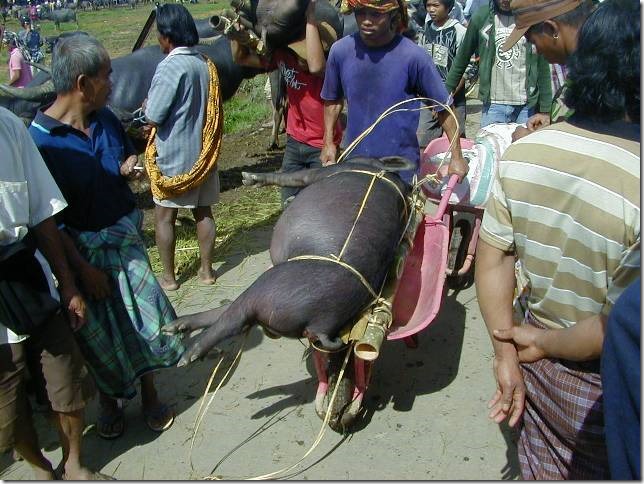 This little piggy went to market and it was not a pretty sight to see. Notice the blue plaid cloth wrapped around the man on the left and the purple/brown plaid on the right. Also the man with the gold cloth hanging from his shoulder. These are sarongs that are almost the size of twin bed sheets. Men wear them for warmth over their shorts. Rusli said the sarong indicates the man has not yet had time to bathe for the day. After someone buys a pig it is caught and bound onto a bamboo holder.
This little piggy went to market and it was not a pretty sight to see. Notice the blue plaid cloth wrapped around the man on the left and the purple/brown plaid on the right. Also the man with the gold cloth hanging from his shoulder. These are sarongs that are almost the size of twin bed sheets. Men wear them for warmth over their shorts. Rusli said the sarong indicates the man has not yet had time to bathe for the day. After someone buys a pig it is caught and bound onto a bamboo holder.
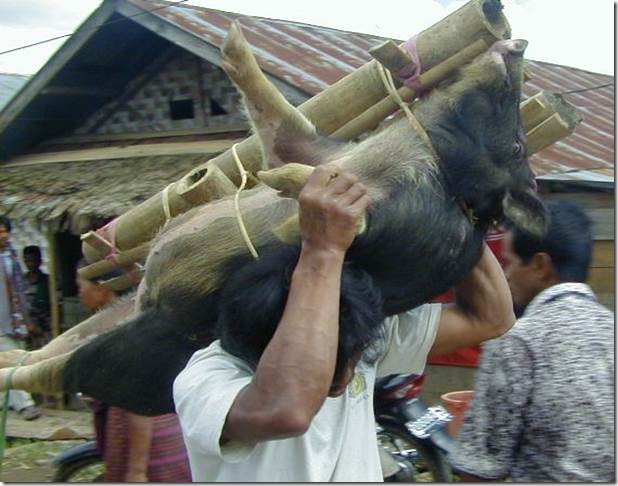 Families saved for years to be able to have a huge feast for their honored family member. This may take place a year after the death. But bodies are mummified and preserved until they are taken to the caves for burial.
Families saved for years to be able to have a huge feast for their honored family member. This may take place a year after the death. But bodies are mummified and preserved until they are taken to the caves for burial.
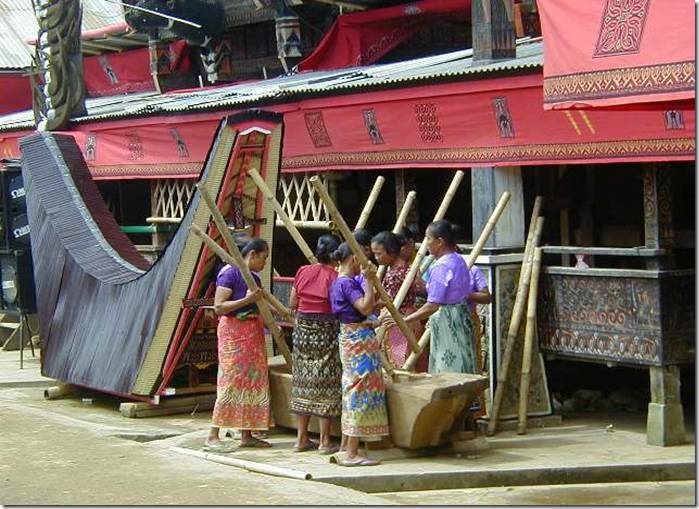 This family was hosting a funeral. July and August are the traditional funeral holding months. No rice harvesting I think so there is time. These women are drumming the news that people are welcomed to the funeral celebration to be held in the next day or so when the family had all arrived. The home is draped with the red bunting. It was the most amazing drumming sound, hollow and rhythmic. Wooden carved boat like structure is used to carry the body to the cave. The roof of houses and rice barns are also constructed with this boat shape. The mountains were once part of an ocean and the ancestors had taken their boats from the water and used them to build homes thousands of years ago.
This family was hosting a funeral. July and August are the traditional funeral holding months. No rice harvesting I think so there is time. These women are drumming the news that people are welcomed to the funeral celebration to be held in the next day or so when the family had all arrived. The home is draped with the red bunting. It was the most amazing drumming sound, hollow and rhythmic. Wooden carved boat like structure is used to carry the body to the cave. The roof of houses and rice barns are also constructed with this boat shape. The mountains were once part of an ocean and the ancestors had taken their boats from the water and used them to build homes thousands of years ago.
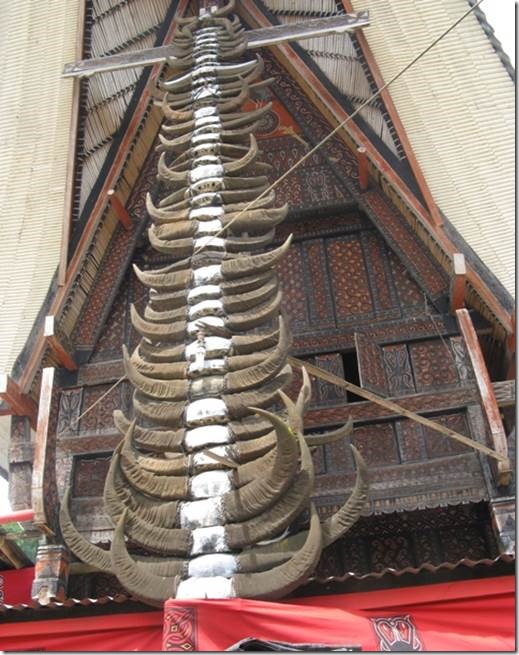 This is the home of the dead person’s family. Many buffalo horns indicate great wealth. The family could afford to buy and slaughter them for the funeral feast. Other families would donate buffalo or pig to the feast but then they must be paid back when there was a death in the donor’s family. Pig jaws were along one home at another site we visited. Family honor is completely tied to these funeral ceremonies and generations save and contribute. The really elaborate funeral celebrations are mostly for people who have lived into their 70s. They may have saved their money but also educated their children who could then earn more money to help provide a bigger funeral. It is the main celebration of family existence.
This is the home of the dead person’s family. Many buffalo horns indicate great wealth. The family could afford to buy and slaughter them for the funeral feast. Other families would donate buffalo or pig to the feast but then they must be paid back when there was a death in the donor’s family. Pig jaws were along one home at another site we visited. Family honor is completely tied to these funeral ceremonies and generations save and contribute. The really elaborate funeral celebrations are mostly for people who have lived into their 70s. They may have saved their money but also educated their children who could then earn more money to help provide a bigger funeral. It is the main celebration of family existence.
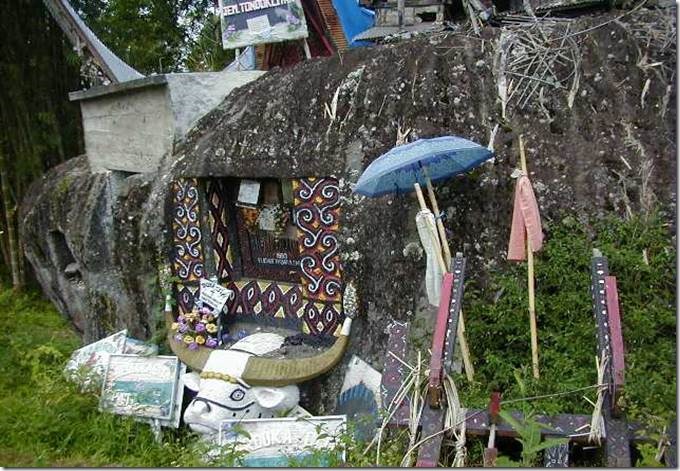 A cave burial site. The people of Tana Toraja or Tarajaland are Christian, maybe from the Dutch colonizers. But they still follow the old burial traditions. The open umbrella shade those carrying the body also shades the body. It is assumed, I think, that the dead person is with them in spirit. Carvers come to the stone and carve caves ordered by a family. Apparently anyone can use stone anywhere, one doesn’t have to own the property. Lots of things are abundant like these stone places, bamboo, bananas, and other fruits so anyone may take for free. One might ask the land owner, but permission is almost always granted. Rusli says here a man gets bamboo for free while in Makassar each man must buy his bamboo where it is not abundant.
A cave burial site. The people of Tana Toraja or Tarajaland are Christian, maybe from the Dutch colonizers. But they still follow the old burial traditions. The open umbrella shade those carrying the body also shades the body. It is assumed, I think, that the dead person is with them in spirit. Carvers come to the stone and carve caves ordered by a family. Apparently anyone can use stone anywhere, one doesn’t have to own the property. Lots of things are abundant like these stone places, bamboo, bananas, and other fruits so anyone may take for free. One might ask the land owner, but permission is almost always granted. Rusli says here a man gets bamboo for free while in Makassar each man must buy his bamboo where it is not abundant.
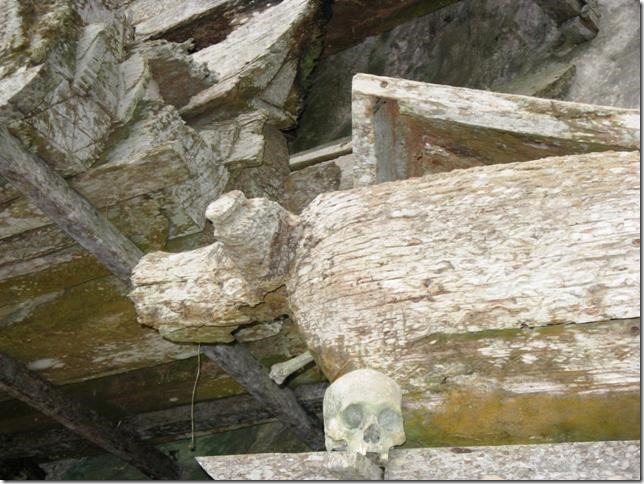 We visited a small village famous for its unique native architecture and for the burial caves and hanging graves sites. This structure is a pig shape. It holds the bones and skulls of women.
We visited a small village famous for its unique native architecture and for the burial caves and hanging graves sites. This structure is a pig shape. It holds the bones and skulls of women.
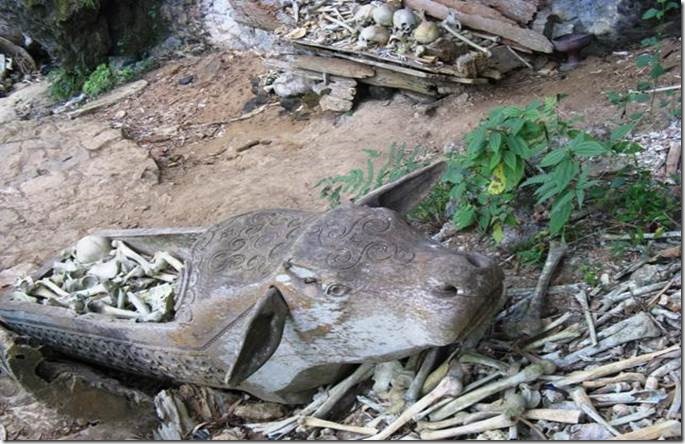 This one is for men and is shaped like a water buffalo.
This one is for men and is shaped like a water buffalo.
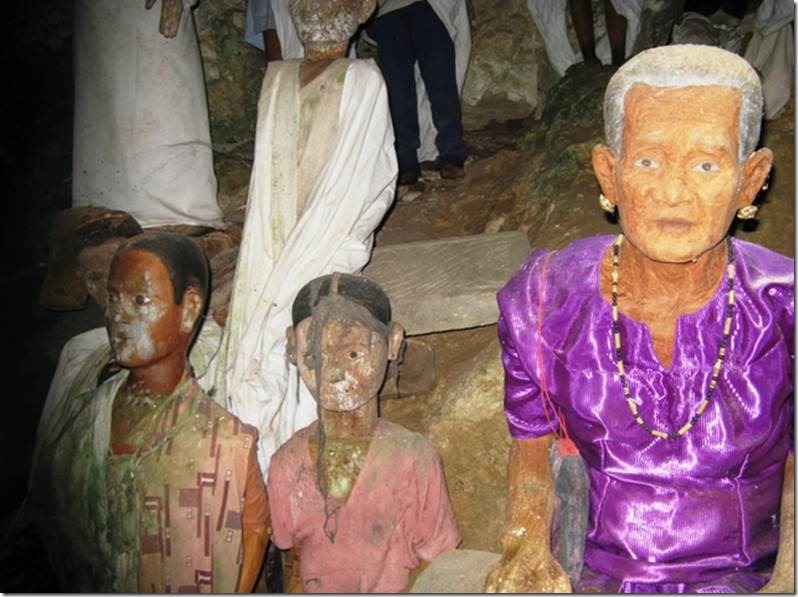 These are tau tau, images of the dead who are placed in the cave. The wealthier you are the larger tau tau you have. This one family of the woman in purple were in one cave large behind a metal fence.
These are tau tau, images of the dead who are placed in the cave. The wealthier you are the larger tau tau you have. This one family of the woman in purple were in one cave large behind a metal fence.
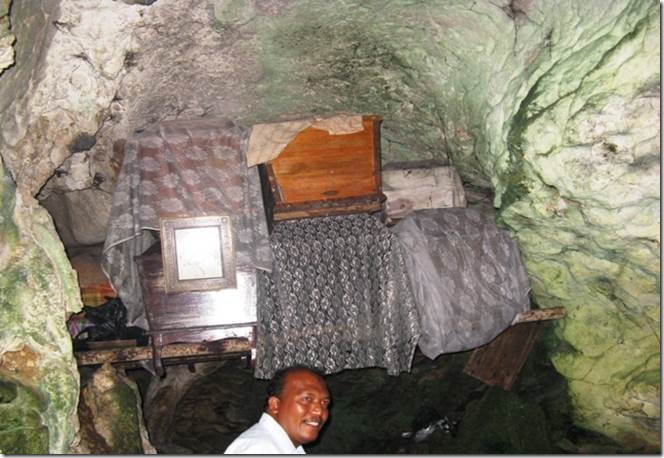 Caskets placed in caves. Our guide Rusli, sounds like Bruce Lee.
Caskets placed in caves. Our guide Rusli, sounds like Bruce Lee.
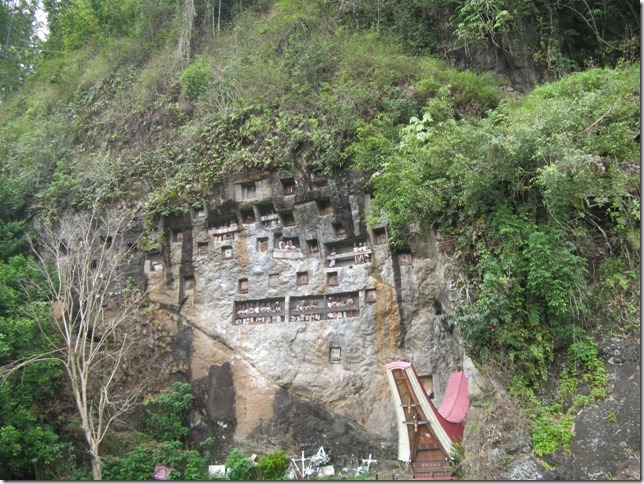 Another burial site. Each square is a carved burial cave.
Another burial site. Each square is a carved burial cave.
The wooden structure in the lower right carried the bodies to the cave.
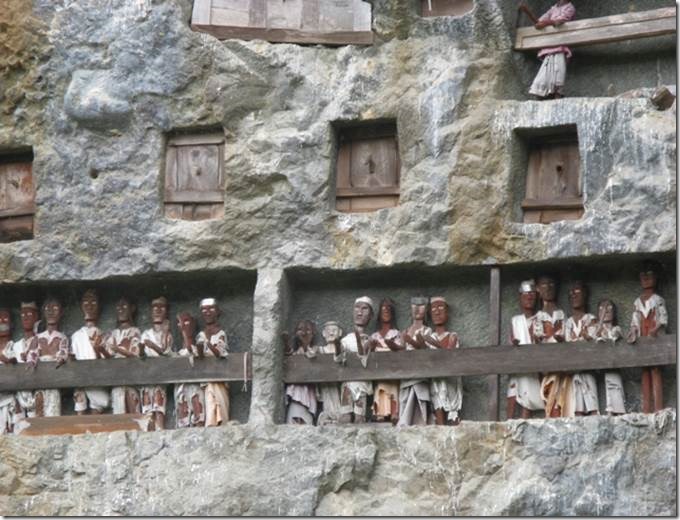 Tau Tau representing those buried in the caves.
Tau Tau representing those buried in the caves.
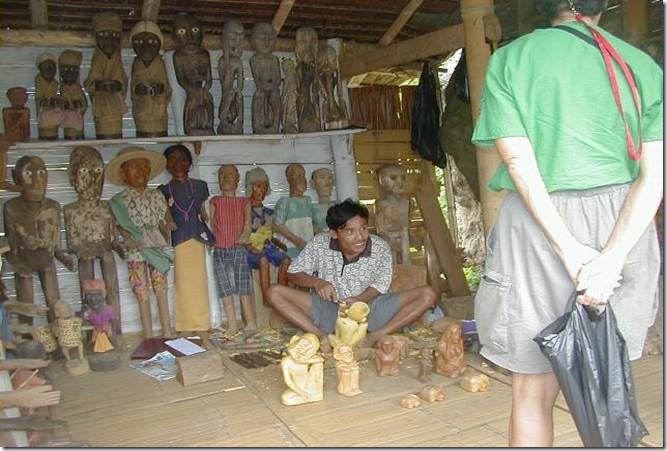 Tau Tau carver. He learned from his father. Families pass the skill to the next generation. He wants his son to get a good education so he can get a better job. The small carvings were amazing. He has been carving them for 20 years. That’s me in the photo. I am wearing a shirt bought in K K that has sleeves. I did see many European women tourists sleeveless and no one was pointing or making a big deal. I guess because this area is Christian and not Muslim. Our guide Rusli couldn’t eat with us at the recommended local “tourist” restaurant because they included pork in their cooking. Rusli is Muslim. We had some great discussions about the world and its issues.
Tau Tau carver. He learned from his father. Families pass the skill to the next generation. He wants his son to get a good education so he can get a better job. The small carvings were amazing. He has been carving them for 20 years. That’s me in the photo. I am wearing a shirt bought in K K that has sleeves. I did see many European women tourists sleeveless and no one was pointing or making a big deal. I guess because this area is Christian and not Muslim. Our guide Rusli couldn’t eat with us at the recommended local “tourist” restaurant because they included pork in their cooking. Rusli is Muslim. We had some great discussions about the world and its issues.
This is just a tiny tiny bit of what we saw. The mountain and rice field scenery was beautiful. The stilt homes totally unique. I will try to do another email before we leave here. It is 1 am Saturday, August 30. Our wifi is far too slow with many disconnections so that odd hours work better. I will try to send this now.
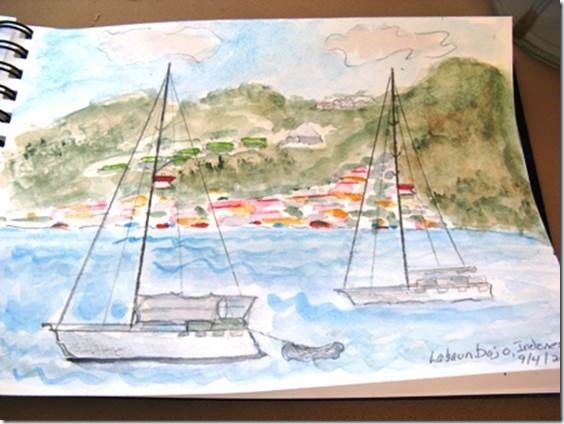 We are here to meet Sail Indonesia (they have a web site) Most boats joined in Darwin, Australia. Some are here already, but most will arrive September 6th. Hard to type September it has been August for so long! There are lots of small islands with low hills surrounding the anchorage. Not far from us in the island famous for the Komdo Dragon lizards and we mean to see them. As you can tell from my painting, lots of sail boats here. We may be the only “stink pot” in the group. A curiosity item. We had one visitor early this morning wanting to see the “Diesel Duck” he had read about.
We are here to meet Sail Indonesia (they have a web site) Most boats joined in Darwin, Australia. Some are here already, but most will arrive September 6th. Hard to type September it has been August for so long! There are lots of small islands with low hills surrounding the anchorage. Not far from us in the island famous for the Komdo Dragon lizards and we mean to see them. As you can tell from my painting, lots of sail boats here. We may be the only “stink pot” in the group. A curiosity item. We had one visitor early this morning wanting to see the “Diesel Duck” he had read about. 
